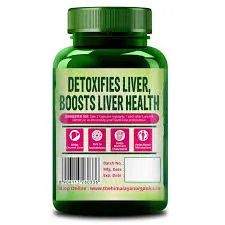
Th12 . 05, 2024 02:17 Back to list
Salmonella Contamination Risk in Poultry Production Facilities and Its Impact on Public Health
Understanding Salmonella in Poultry Production
Salmonella is a type of bacteria that can cause foodborne illness in humans. It is commonly found in poultry products, where it can lead to significant public health concerns. Understanding how Salmonella contaminates poultry, its implications for food safety, and preventive measures is critical for both producers and consumers.
The Prevalence of Salmonella in Poultry
Poultry, including chicken and turkey, is often associated with Salmonella contamination. The bacteria can be present in various forms, including in the intestines of healthy birds, on the skin, and within the meat. According to the Centers for Disease Control and Prevention (CDC), millions of Salmonella infections occur each year, with poultry being one of the leading contributors.
The primary routes of Salmonella transmission in poultry include 1. Environmental Contamination Bacteria can be found in the farm environment, including feed, water, and in the soil. If birds come into contact with contaminated surfaces, they can easily carry the bacteria. 2. Cross-Contamination During processing, handling, and transportation, Salmonella can spread from one chicken to another or contaminate other products, including ready-to-eat foods. 3. Inadequate Biosecurity Measures Farms that do not implement strict biosecurity protocols can experience outbreaks of Salmonella. Factors such as poor sanitation, overcrowded conditions, and lack of adequate veterinary care can exacerbate the problem.
Consequences of Salmonella Contamination
The implications of salmonella contamination in poultry are severe, affecting public health, consumer confidence, and the poultry industry. When consumed, Salmonella can cause symptoms like diarrhea, fever, and abdominal cramps, typically lasting 4 to 7 days. For some individuals, particularly young children, the elderly, and those with weakened immune systems, the infection can lead to more severe health issues and even hospitalization.
In addition to health risks, salmonella outbreaks can result in significant economic impacts. According to the CDC, the costs associated with Salmonella infections—including medical expenses, lost productivity, and decreased consumer trust—amount to billions of dollars each year. When a large outbreak occurs, it can lead to recalls of contaminated products, further straining the industry.
Preventive Measures in Poultry Production
salmonella en pollo factories

To mitigate the risk of Salmonella contamination, both poultry producers and consumers can take several preventive measures
1. Enhanced Biosecurity Practices Farms should establish strict biosecurity protocols, including regular cleaning and disinfection of facilities, controlling access to poultry areas, and monitoring for signs of illness in flocks.
2. Vaccination and Monitoring Vaccination of poultry against Salmonella and regular monitoring of flocks can help prevent the spread of the bacteria. Producers should implement health management programs that include testing for Salmonella in their birds.
3. Safe Processing Poultry processing facilities must adhere to strict hygiene standards to prevent cross-contamination. This includes proper handling of raw poultry, maintaining cleanliness in equipment, and training employees in safe food handling practices.
4. Consumer Education Educating consumers about safe food handling practices is essential. This includes cooking poultry to the appropriate internal temperature (at least 165°F or 74°C), avoiding cross-contamination with other foods, and practicing proper hand hygiene.
5. Regulatory Oversight Government agencies, such as the Food Safety and Inspection Service (FSIS) in the United States, play a crucial role in monitoring and regulating poultry production. Strict guidelines and regular inspections help ensure that poultry products meet safety standards before reaching consumers.
Conclusion
Salmonella in poultry is a significant public health concern that requires a multi-faceted approach for prevention and control. By understanding how contamination occurs and implementing rigorous biosecurity measures, producers can help ensure the safety of their products. Consumers also play a vital role by following safe food handling practices. Only through collaboration between producers, regulators, and consumers can we effectively reduce the incidence of Salmonella in poultry and protect public health.
-
Premium Honeysuckle Products - Leading Honeysuckle Manufacturer & Supplier Factory
NewsJun.10,2025
-
Pulmonary Edema Solutions from Leading Manufacturer & Supplier Reliable Factory Price
NewsJun.10,2025
-
Red Eyes - Leading Red Eyes Manufacturer & Supplier, Premium Quality Factory Price
NewsJun.10,2025
-
Broiler Ascites Syndrome Solutions Top Manufacturers
NewsJun.10,2025
-
Premium Amoxicillin Suppliers Reliable Biomox Mexican Factories
NewsJun.10,2025
-
Top Brewing Cell Wall Solutions Optimized Efficiency
NewsJun.09,2025




